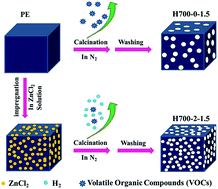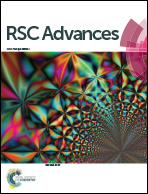Enteromorpha based porous carbons activated by zinc chloride for supercapacitors with high capacity retention†
Abstract
Porous carbons were prepared from enteromorpha overrunning in China Sea with ZnCl2 as an active agent. The obtained porous carbons were used as electrode materials to make supercapacitors. In order to make enteromorpha based supercapacitors with high performance, the effects of preparation parameters, including impregnation weight ratio of ZnCl2 to enteromorpha, activation time and temperature on pore structure and electrochemical performances of enteromorpha based porous carbons (EBPCs) were investigated. The specific area and porous structure were characterized by nitrogen adsorption. Galvanostatic charge–discharge and cyclic voltammetry analysis were used to investigate the electrochemical properties of EBPCs. The results show that activation temperature of 700 °C, the impregnation weight ratio of 2/1 and activation time of 1.5 h are the optimal preparation parameters. The prepared EBPC with a specific surface area of 1651 m2 g−1 exhibited a specific capacitance of 206 F g−1 and capacity retention of 93% even after 5000 cycles, showing excellent electrochemical properties of EBPC and good future utilization of enteromorpha.


 Please wait while we load your content...
Please wait while we load your content...